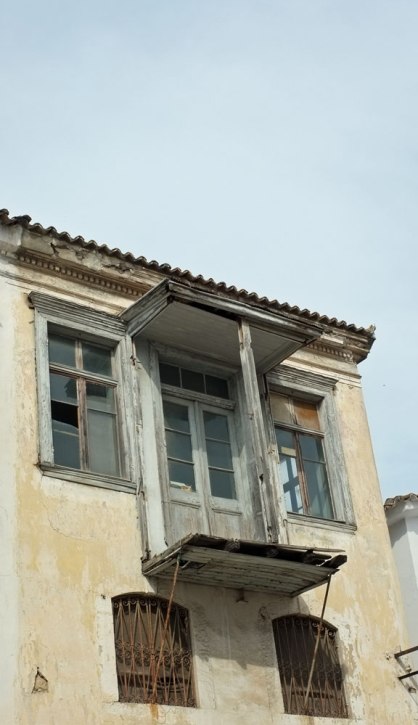
Chesme is a small town at the edge of the Erythrean peninsula, some 85 kilometers west of Izmir. I visited it during my recent trip in the area. As you enter the old town area, you cannot help but feel overwhelmed by the presence of the castle.
The Chesme castle which was built in a rectangular shape in 1508 during the era of Beyazıt II presents wonderful scenery with 6 towers and ditches on 3 sides. İt was first built at sea level, but it was left inside as the sea was filled within the course of time.

The impressive bronze statues of Cezayirli Gazi Hasan Pasha and his lion pet figure prominently in the old town. He was a fleet commander in the Battle of Chesme (1770), during the Russo-Turkish war of 1768-1774, where the Turkish fleet was almost destryed by the Russians. Cezayirli Gazi Hasan Pasha managed to rescue his ship and crew and sailed back to Istanbul, where he gave the Sultan the bad news. There is some interesting twist in the story. I quote from wikipedia:
“Anecdotal evidence indicates that, immediately after the defeat at Chesma, he and his men were lodged by a local priest in Ayvalık who did not know who they were. Hasan Pasha did not forget the kindness shown at that hour of crisis and later accorded virtual autonomy to the Greek-dominated town of Ayvalık, paving the way for its becoming an important cultural center for that community in the Ottoman Empire in the 19th century.”

The Church of Hagios Haralambos was the biggest on the Erythrean peninsula when the Greeks were living in the area. It was built in 1832 by a rich Greek merchant from the island of Chios, 8 nautical miles west of Chesme, who was a friend of the Sultan, and asked for his permission to build a church in Chesme. The Sultan gave the merchant a piece of rope, sealed on both sides with the Sultan’s seal of wax, and told him that he could build a church that would not in any side exceed the length of the rope.

Today the Church has been converted to a cultural center. I did not go in, as it was locked. Other people who got in later, said that the interior was covered by carpets and other handicrafted materials.

The name of the town means “fountain” in Turkish. Until 1922 the majority of the inhabitants were Greeks and Orthodox Christians.

After 1922, all the Christians were expelled and most of their homes either given to Turks who came to Chesme from Greece, or abandoned alltogether.
A lot of the Turks who settled in Cesme from Greece have come from the island of Crete.

Today Chesme is a thriving town of 10,000 inhabitants, who multiply during the summer months. The area is the desired destination of high level domestic tourism, as well as international.

In one of the coffee shops of the area I met “Ali”, a Turk who is married to a Greek woman and used to live in Athens. They have moved to Cesme recently. While Greece is in the midst of the worst financial crisis after the collapse of 1932, the western shores of Turkey, and especially the Cesme peninsula is booming.
In Izmir I met a Greek woman who told me that she and her husband moved to Izmir a year ago. She has a job in Izmir and her husband – a builder – is most of the time working in construction sites in the Cesme peninsula.

The town of Cesme features a wonderful marina. It was full of shiny boats. Unfortunately I cannot say the same for the island of Chios, a few miles to the west.

Last but not least, a quick lunch in the chain of “Kofteci Ramiz” proved that even fast food can be good. Grilled beef patties, mixed with Kaşar chese, on sliced pita bread, garnished with tomatoes, fresh pepper and parsley. Special chilli sauce is on request.


Ενδιαφέρον το οδοιπορικό σου στην άλλη μεριά του Αγαίου και οι, μέχρι πρότεινος αδιανόητες, διαπιστώσεις για την ευημερούσα οικονομία και την μετακίνηση ανθρώπων προς τα εκεί για εξεύρεση εργασίας. Τα πάντα αλλάζουν λοιπόν, τίποτα δεν μένει κλεισμένο στα στερεότυπα που πάγωσαν την σκέψη μετά το 1922. Η εισβολή του χρόνου στον νεκρό κόσμο των ιδεών και των προκαταλήψεων μπορεί να γίνει ευεργετική απαρχή αναστοχασμού, μπορεί να σπρώξει ακόμη βαθύτερα στο σπήλαιο της συνομωσιολογίας, μπορεί απλώς να οδηγήσει σε παθητική αναπροσαρμογή. Ίδωμεν.